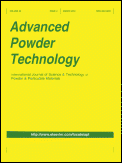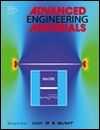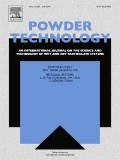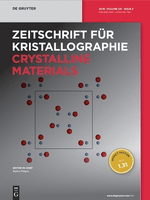
ADVANCED POWDER TECHNOLOGY
Scope & Guideline
Elevating Knowledge in Powder Technologies
Introduction
Aims and Scopes
- Synthesis and Characterization of Powders:
Research on various synthesis techniques for producing powders, including mechanochemical methods, sol-gel processes, and hydrothermal synthesis, along with characterization techniques such as X-ray diffraction, electron microscopy, and spectroscopy. - Powder Processing and Applications:
Exploration of the processing techniques for powder materials, including milling, granulation, and compaction, and their applications in industries such as pharmaceuticals, catalysis, and energy storage. - Powder Behavior and Flow Dynamics:
Investigation of the physical behavior of powders under different conditions, including flow, segregation, and packing, often utilizing computational methods like Discrete Element Method (DEM) simulations. - Environmental and Energy Applications:
Studies focusing on the environmental applications of powders, such as photocatalysis for pollutant degradation, CO2 capture, and energy storage solutions, including batteries and supercapacitors. - Nanomaterials and Advanced Composites:
Research on the development and application of nanostructured powders and composites, including their mechanical, thermal, and electrical properties, and their potential for enhancing performance in various applications.
Trending and Emerging
- Sustainable and Green Synthesis Methods:
There is a growing trend towards eco-friendly synthesis approaches for powder materials, including the use of renewable resources and green chemistry principles to reduce environmental impact. - Advanced Functional Materials:
Research is increasingly focusing on the development of advanced functional materials, including smart materials, nanocomposites, and hybrid systems that exhibit enhanced properties for specific applications. - Machine Learning and AI in Powder Technology:
The integration of machine learning and artificial intelligence techniques to optimize powder processing parameters and predict material properties is emerging as a significant trend in recent publications. - Photocatalytic and Environmental Applications:
The application of powders in environmental remediation and photocatalysis is gaining momentum, with studies focusing on the degradation of pollutants and CO2 reduction using advanced materials. - Characterization of Powder Flow and Behavior:
There is an increasing emphasis on the understanding of powder flow dynamics and behavior through advanced modeling techniques, including DEM and computational fluid dynamics (CFD), to enhance processing efficiency.
Declining or Waning
- Traditional Powder Metallurgy Techniques:
There appears to be a decreased focus on conventional powder metallurgy methods such as sintering and compaction, as more innovative techniques and materials gain prominence in research. - Basic Characterization Techniques:
Research involving basic characterization techniques, such as simple particle size analysis and bulk density measurements, is becoming less common as more sophisticated and nuanced methods gain traction. - Single-Function Applications of Powders:
The trend is moving away from studies that focus solely on one-dimensional applications of powders, such as basic adsorbents or traditional catalysts, shifting towards multifunctional materials and composites.
Similar Journals

ADVANCED ENGINEERING MATERIALS
Fostering Dialogue Between Academia and IndustryADVANCED ENGINEERING MATERIALS is a leading journal dedicated to the field of materials science, particularly within the realm of condensed matter physics. Published by WILEY-V C H VERLAG GMBH in Germany, this esteemed journal has been a crucial platform for disseminating cutting-edge research since its inception in 1999. With an impressive impact factor and ranked in the top quartiles of its categories, it boasts a Q1 ranking in Condensed Matter Physics and a Q2 rank in related materials science fields as of 2023. ADVANCED ENGINEERING MATERIALS serves a diverse readership, including researchers, industry professionals, and students, striving to advance the understanding and application of innovative materials. Frequent contributions to this journal help bridge theoretical advancements with practical applications, fostering a vibrant academic and industrial dialogue. Although currently not an open-access journal, the insights shared within its pages are pivotal for anyone engaged in the dynamic sectors of engineering and material sciences.

JOURNAL OF MATERIALS SCIENCE
Charting New Territories in Material ResearchJOURNAL OF MATERIALS SCIENCE, published by SPRINGER, stands as a highly regarded periodical in the field of materials science, delivering impactful research since its inception in 1966. With an impressive Q1 ranking in both Mechanical Engineering and Mechanics of Materials, alongside strong Q2 positions in Ceramics, Composites, and General Materials Science, this journal serves as a pivotal resource for scholars and practitioners alike. It offers insightful contributions that span a diverse range of topics, from emerging materials to advanced applications in engineering. With a robust Scopus ranking reflecting its global influence—ranking 91 out of 672 in Mechanical Engineering and 63 out of 398 in Mechanics of Materials—the JOURNAL OF MATERIALS SCIENCE maintains an essential role in advancing the understanding and innovation within the discipline. Researchers, professionals, and students are encouraged to access this esteemed journal to keep abreast of groundbreaking findings and methodologies that shape the future of materials science.

Advanced Powder Materials
Exploring the Boundless Potential of Powder ApplicationsAdvanced Powder Materials, published by KEAI PUBLISHING LTD, stands at the forefront of research in materials science, particularly focusing on the intricate relationships within powder materials and their applications across several domains including catalysis, ceramics, energy, and coatings. With an Open Access policy initiated in 2022, this journal ensures that cutting-edge findings are readily accessible to researchers, professionals, and students globally. Based in Beijing, China, the journal has gained recognition for its exceptional impact, achieving a prestigious Q1 ranking in multiple categories such as Catalysis, Ceramics and Composites, and Materials Science. The journal not only promotes innovative research but also serves as a vital platform for interdisciplinary collaboration, significantly impacting the fields it covers, which also include notable rankings in Metals and Alloys and Surfaces, Coatings, and Films. By fostering an environment of knowledge sharing, Advanced Powder Materials is poised to make substantial contributions to the scientific community over its converged years from 2022 to 2024.

Korean Journal of Materials Research
Bridging Gaps in Research and PracticeKorean Journal of Materials Research is a pivotal publication in the field of materials science, offering a platform for innovative research and comprehensive reviews in miscellaneous materials applications. Published by the MATERIALS RESEARCH SOC KOREA, this journal has been a valuable resource since its inception in 2007 and continues to disseminate vital findings through 2024. Although currently categorized in Q4 of the Materials Science quartiles, the journal is committed to advancing knowledge and fostering research collaboration within the scientific community. With an ISSN of 1225-0562 and an E-ISSN of 2287-7258, the journal aims to bridge gaps in research and practice, appealing to a diverse audience of researchers, professionals, and students interested in the latest advancements in materials science. While access to content may not be open, the journal's impact in the regional and global research landscape is steadily growing, as indicated by its Scopus ranking in the 7th percentile of General Materials Science. Engage with the Korean Journal of Materials Research to stay at the forefront of materials innovation!

JOURNAL OF ELECTROCERAMICS
Advancing the Future of ElectroceramicsJOURNAL OF ELECTROCERAMICS, published by SPRINGER in the Netherlands, serves as a pivotal platform for advancing the field of electroceramics since its inception in 1997. With a keen focus on innovative materials and applications, this journal covers diverse areas encompassing ceramics and composites, condensed matter physics, and electronic materials, significantly contributing to interdisciplinary research. Although currently not an Open Access publication, the journal's engagement in rigorous peer review ensures the dissemination of high-quality research, supported by its respectable Q3 ranking in several relevant categories in 2023. Researchers and professionals will find value in its comprehensive scope, showcasing cutting-edge developments that shape the future of engineering and materials science. The JOURNAL OF ELECTROCERAMICS continues to play a crucial role in bridging theoretical discoveries with practical applications, making it an indispensable resource for students, scholars, and industry experts alike.

JOURNAL OF MATERIALS SCIENCE-MATERIALS IN ELECTRONICS
Unveiling Breakthroughs in Electronic Materials ResearchJOURNAL OF MATERIALS SCIENCE-MATERIALS IN ELECTRONICS, published by Springer, is a distinguished international journal that serves as a vital platform for the dissemination of cutting-edge research in the field of materials science, with a keen focus on electronics. Since its inception in 1990, this journal has consistently contributed to the advancement of knowledge across a range of interdisciplinary categories, including Atomic and Molecular Physics, Optical and Magnetic Materials, and Biomedical Engineering, achieving notable quartile positions in various 2023 Scopus rankings. With an impact factor that signifies its scholarly influence, this journal provides a rigorous peer-reviewed environment for researchers and practitioners to share innovative ideas, experimental findings, and theoretical developments. Although it does not currently offer open access options, the depth and breadth of topics covered—including condensed matter physics and bioengineering—make it an essential resource for those at the forefront of materials research. With a commitment to bridging the gap between theory and practical application, the JOURNAL OF MATERIALS SCIENCE-MATERIALS IN ELECTRONICS continues to pave the way for future explorations in the ever-evolving landscape of materials science.

POWDER TECHNOLOGY
Transforming Research into Powder ApplicationsPOWDER TECHNOLOGY is a prestigious journal published by Elsevier, focusing on the vital field of powder technology within chemical engineering. With an impressive impact factor and ranked in the top percentile (88th) of Scopus, this journal has secured its position as a leading resource, classified in the Q1 category of Chemical Engineering (miscellaneous). The journal brings together groundbreaking research and innovative developments in powder processing, characterization, and application, making it an essential publication for researchers, professionals, and students interested in advancing knowledge and practices in this dynamic field. Established in 1967 and continuously evolving with a scope that encompasses the intersection of material science and engineering processes, POWDER TECHNOLOGY embodies a commitment to fostering scientific inquiry and sharing knowledge. Researchers can access relevant articles through a comprehensive platform, ensuring timely dissemination of findings that are critical for both academia and industry.

Zeitschrift fur Kristallographie-Crystalline Materials
Transforming Ideas into Crystalline RealityZeitschrift für Kristallographie-Crystalline Materials is a prestigious academic journal published by Walter de Gruyter GmbH, focusing on the intricate field of crystallography and its applications within condensed matter physics, inorganic chemistry, and materials science. Established in Germany, this journal spans a rich history from its inception in 1930 to its convergence years from 2012 to 2024, presenting cutting-edge research and developments in crystalline materials. With an impact factor reflective of its critical role within its field—ranking Q3 in the prestigious quartiles for 2023 across multiple categories—this journal serves as an essential platform for researchers, professionals, and students seeking to expand their knowledge and contribute to the advancement of crystalline materials. While currently not offering open access, the journal remains committed to disseminating high-quality, peer-reviewed articles that inspire innovation and collaboration within the scientific community.

Physics and Chemistry of Solid State
Transforming Ideas into Breakthroughs in Solid-State ResearchPhysics and Chemistry of Solid State is a distinguished open access journal published by Vasyl Stefanyk Precarpathian National University in Ukraine, dedicated to advancing research in the fields of condensed matter physics, materials science, and physical and theoretical chemistry. Since its inception in 2000, the journal has provided a platform for the dissemination of innovative ideas and original research findings, contributing significantly to the global scientific community. With a variety of access options, it facilitates the sharing of knowledge and collaboration among researchers worldwide. The journal has garnered recognition with respectable rankings in Scopus, positioning itself among the significant publications in its domain, particularly noted for its contributions to materials science and condensed matter physics. As it moves through its converged years from 2018 to 2024, Physics and Chemistry of Solid State aims to foster interdisciplinary dialogue and prepare the next generation of scientists to tackle complex challenges in solid-state research.

APPLIED PHYSICS A-MATERIALS SCIENCE & PROCESSING
Pioneering Research in Materials Science and ProcessingApplied Physics A: Materials Science & Processing, published by Springer Heidelberg, is an esteemed academic journal that has been at the forefront of innovative research since its establishment in 1995. With a strong focus on the intersection of physics, materials science, and engineering, this journal explores cutting-edge developments and applications that influence contemporary materials research. Categorized in the Q2 quartile across both Chemistry and Materials Science, it boasts respectable rankings in Scopus, affirming its influence and reach within the academic community. Although primarily a subscription-based journal, it is dedicated to disseminating high-quality research findings that advance our understanding in these fields. Researchers, professionals, and students alike can benefit from the journal's commitment to publishing comprehensive studies, methodological advancements, and insightful reviews that push the boundaries of knowledge in materials science.